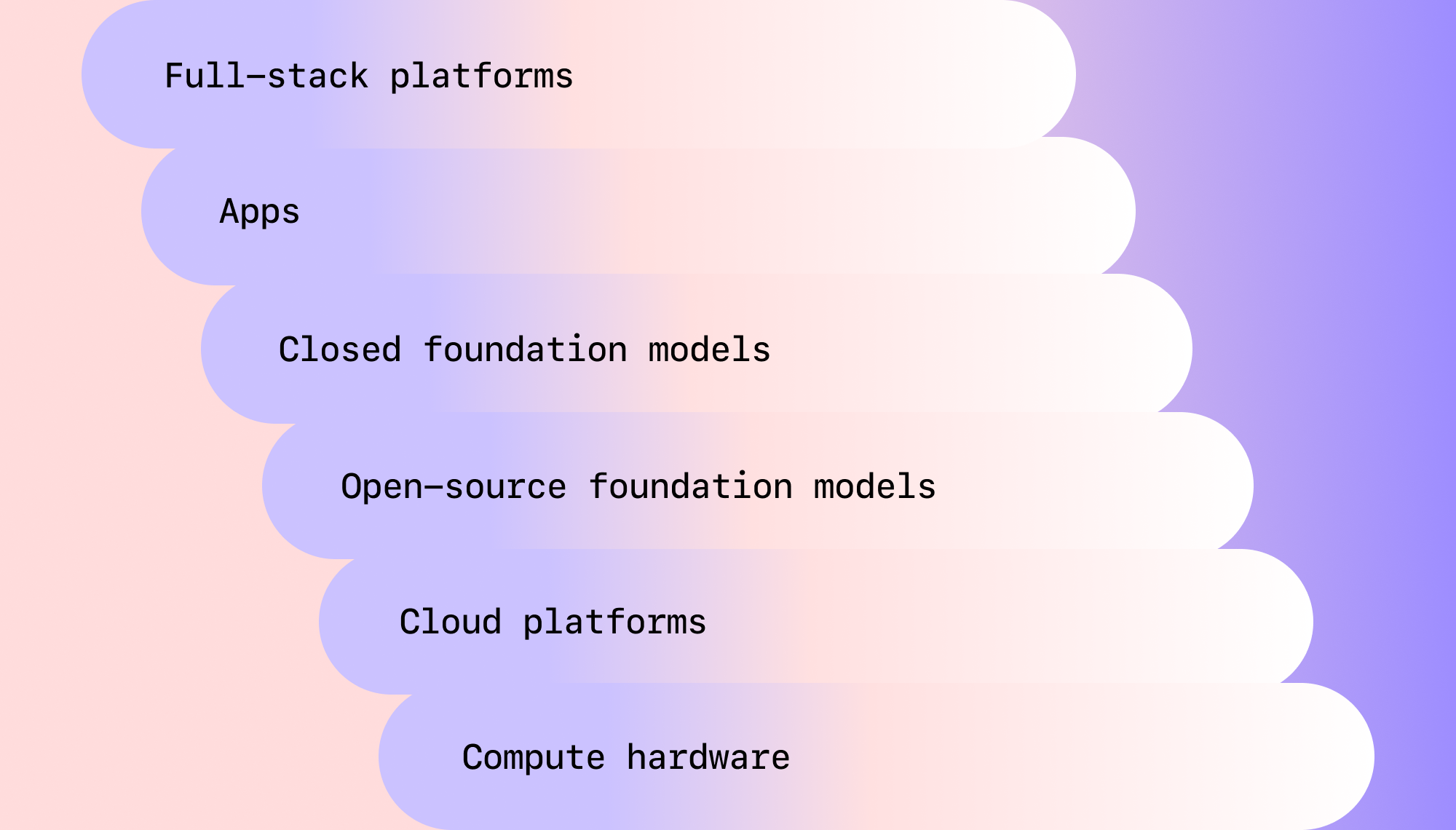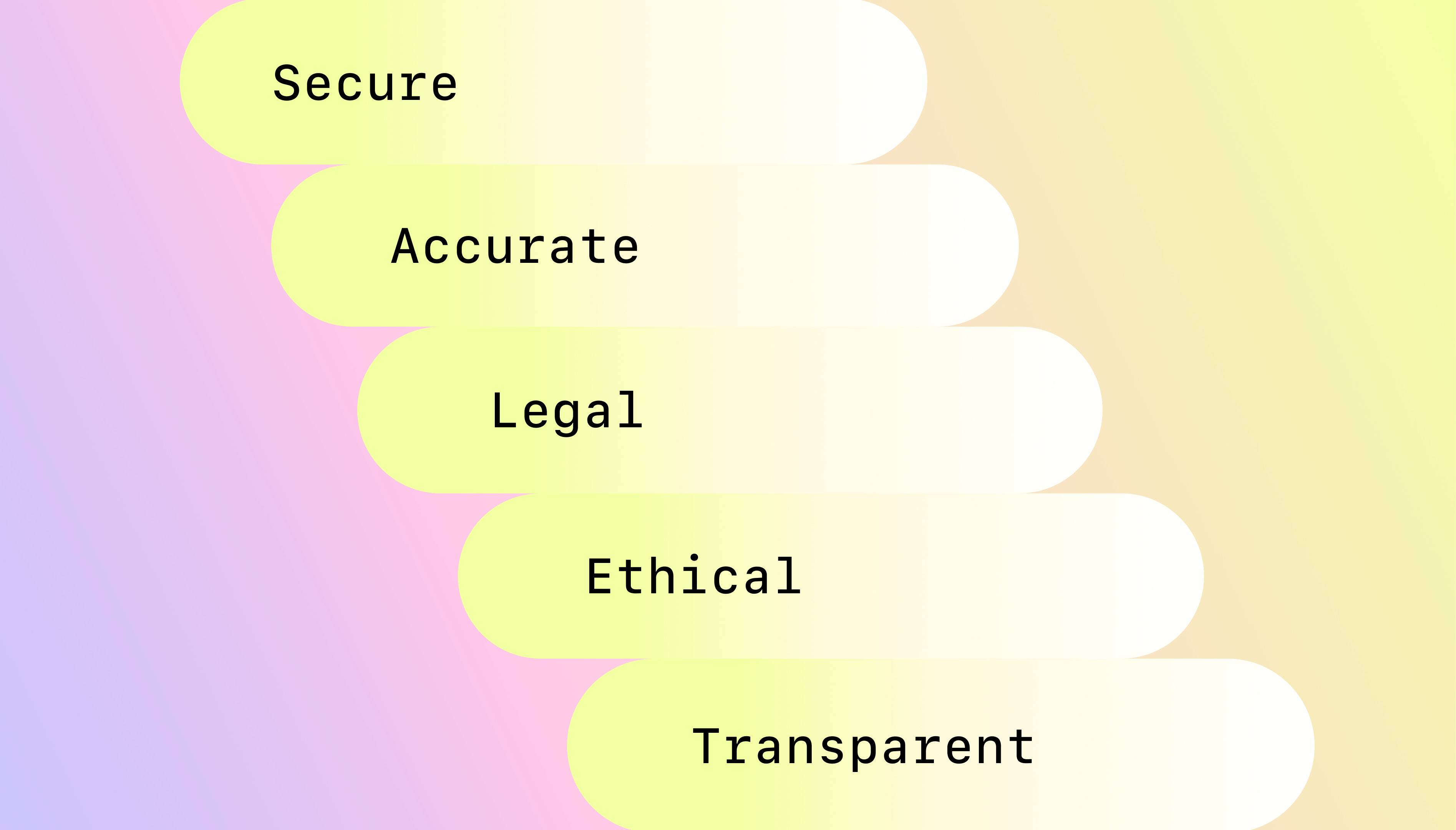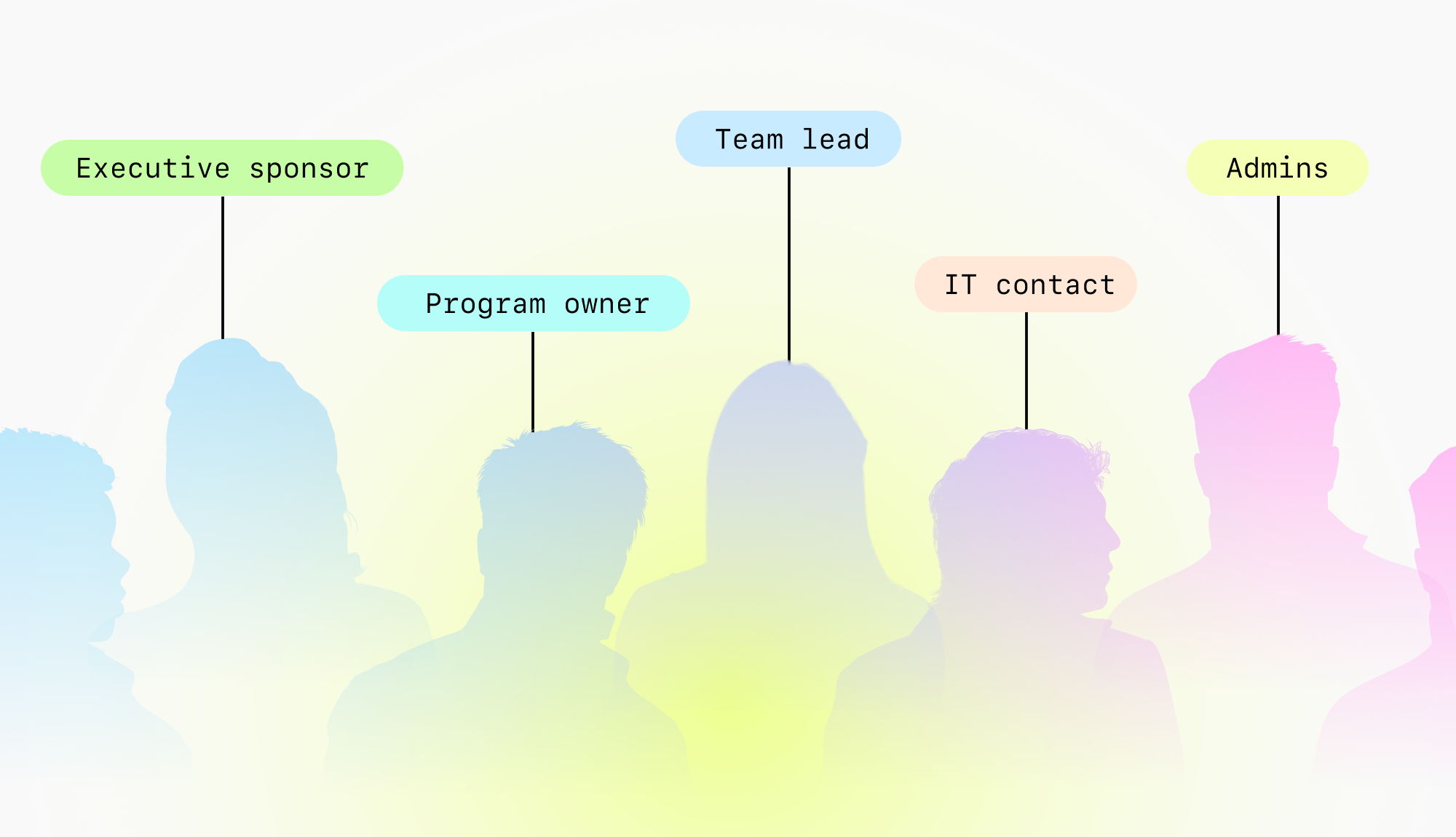AI in the enterprise
– 7 min read
The generative AI adoption roadmap
A business leader’s guide to responsible employee training

Imagine getting behind the wheel of a car for the first time. Daunting, right? There are knobs, pedals, levers — some familiar, some mysterious in purpose. Then there are all the traffic signs and rules you’re expected to know. Without proper training like a driver’s education course, you run the risk of violating traffic laws or worse — getting into an accident and harming yourself or others.
Like learning to drive, navigating the world of generative AI is daunting for employers and employees alike. To ensure you make the most of AI tools and to avoid consequences for brand reputation and business security, you need to develop a plan to streamline the learning and adoption process.
- A company-wide AI use policy will help employees avoid common pitfalls and security risks.
- Give team members a headstart in generative AI through tools they already use.
- Writing the right prompt is essential when working with generative AI and will make all the difference in the results.
- The right partner can help you navigate the complex landscape of AI technologies, help you select the right ones for your needs, and help you implement them responsibly.
The starting point: a company-wide AI use policy
Employees must understand the rules of the road before they can hit the gas. If you use AI features powered by general-use LLMs in software apps like Notion, Slack, Word, Excel, and Google Docs, your employees could put sensitive data at risk. One recent and highly publicized example: the Samsung ChatGPT leak.
The first step is to establish and communicate a clear AI strategy and policies on the responsible use of AI at your company. This will help employees avoid common pitfalls and security risks.
Crafting a corporate use policy for generative AI needs careful thought about boundaries, people, and use scenarios. It’s essential to include all key stakeholders from across the business, including HR, legal, sales, marketing, business development, operations, and IT, to make sure the policy is thorough.
Clarify how your existing tech vendors handle data from AI inputs and new potential uses that may come up in the future, and create a living document that can be regularly updated. Accompany the policy with appropriate training and instruction, such as creating training videos and running live sessions, to ensure everyone understands and follows the policy.
The test-drive: proof of concept and pilot project
When introducing AI tools to your teams, take a crawl/walk/run approach.
Crawl: Start with a low-risk proof-of-concept
Before you invest a ton of resources into a new solution, test out a low-cost, low-impact AI use case that will streamline a workflow for an internal team. Your proof of concept shouldn’t pose a reputational risk for your company, so choose a test case that’ll have little to no impact on customer-facing products or services. One smart use case for a generative AI proof-of-concept might be using AI to help scale the production of product documentation and employee training materials.

Discover ideas for use cases for generative AI solutions in The Big Book of Enterprise AI Use Cases
Walk: Pilot various tools
As early adopters test out solutions, be sure to monitor their use, gather data on which features they’re using the most, collect feedback on how the tools impact their jobs, and seek out power-users’ ideas for how to use the tools in innovative ways.
Run: Roll out training across the organization
Once you’ve landed on an official AI tech partner/vendor, it’s time to operationalize processes and roll out training and implementation, team by team. Work with your vendors to develop on-site trainings, workshops, and webinars to help your employees become expert AI operators.
Behind-the-wheel AI tool instruction
Whether an employee is piloting a tool or taking part in a company-wide rollout, developing “muscle memory” is key using AI tools effectively. This means developing a knowledge around when and how to employ AI technology on the job, and weaving it intuitively into one’s workflow — just like a new driver learns when to break, accelerate, use turn signals, and parallel park a car, and develops hand-eye coordination to make these actions second nature.
Choose AI tools that merge securely with your teams’ current software
A major contributor to the success of employee training and tool adoption is your choice in AI technology partners. The right partner can help you navigate the complex landscape of AI technologies, help you select the right ones for your needs, and help you implement them responsibly.
Give team members a head start in generative AI through tools they already use. Look for AI platforms that can integrate enterprise-grade generative AI functionality into your applications, as well as ones that connect to commonly-used software like Figma, Office, Contentful, Chrome, and Google Workspace.
Make it safe to explore and experiment
Additionally, companies need to create an environment that allows employees to practice their skills and receive feedback from peers, colleagues and supervisors. This will help them to stay on track and begin to recognize when and how to use AI tools.
If your company doesn’t already have an internal community for exploring AI, encourage your team members to join an online community.
Put your most strategic and creative thinkers in the driver’s seat
AI should give your people’s best work a boost. AI can lighten their workload, but the people using them should have more expertise and creativity than the tools. Users need to know how to spot top-notch results, when to double-check facts, and how to use the tool to make their work even more special, useful, or captivating.
For example, at Neo Financial, they found that when experts use powerful AI tools, productivity skyrockets. Delphine Lavy, the creative content lead, says generative AI platform Writer has been a huge help.
“We use it to write our blog articles and longform copy. It took some getting used to — learning how to feed the right information to get what we want. But now that we’re more familiar with that process, what we get is amazing,” Lavy told us. “We have saved so much time in terms of research that I think we can produce blog articles three times faster than before.”
Tune-up everyone on AI prompting skills
Writing the right prompt is essential when working with generative AI and will make all the difference in the results you get. Don’t settle for generic prompts you find online – with a bit of training, your team can become experts in crafting natural language prompts that lead to awesome outputs. Plus, they’ll know when to skip the prompt and just use a template instead.

For an in-depth look at prompt crafting for AI writing tools, check out the webinar Writer hosted on the topic or read Prompt crafting: AI writing prompts for any marketing task .
The destination: positive employee and business outcomes fueled by AI
Once your employees have a clear understanding of how best to use AI and have time to put their learnings into practice, using AI tools will become second nature. Soon you’ll have a workforce that partners with AI to solve problems in creative ways, speed up and automate complex or tedious tasks, and accelerate business growth.





